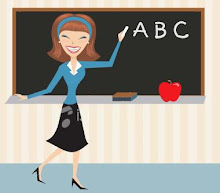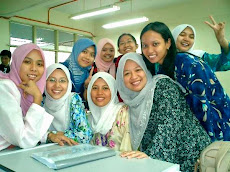Kecak was originally a trance ritual accompanied by male chorus. German painter and musician Walter Spies became deeply interested in the ritual while living in Bali in the 1930s and worked to recreate it into a drama, based on the Hindu Ramayana and including dance, intended to be presented to Western tourist audiences. This transformation is an example of what James Clifford describes as part of the "modern art-culture system" in which, "the West or the central power adopts, transforms, and consumes non-Western or peripheral cultural elements, while making 'art' which was once embedded in the culture as a while, into a separate entity." Spies worked with Wayan Limbak and Limbak popularized the dance by traveling throughout the world with Balinese performance groups. These travels have helped to make the Kecak famous throughout the world.
Wednesday 25 March 2009
Hypertext & Hypermedia
Kecak was originally a trance ritual accompanied by male chorus. German painter and musician Walter Spies became deeply interested in the ritual while living in Bali in the 1930s and worked to recreate it into a drama, based on the Hindu Ramayana and including dance, intended to be presented to Western tourist audiences. This transformation is an example of what James Clifford describes as part of the "modern art-culture system" in which, "the West or the central power adopts, transforms, and consumes non-Western or peripheral cultural elements, while making 'art' which was once embedded in the culture as a while, into a separate entity." Spies worked with Wayan Limbak and Limbak popularized the dance by traveling throughout the world with Balinese performance groups. These travels have helped to make the Kecak famous throughout the world.
Posted by Tuan Syazwani Tuan Azhar at 2:23 pm 0 comments
Friday 13 March 2009
World Wide Web Lesson Plan
Time: 80 minutes (double period)
Aim:
- By the end of the lesson, students should be able to obtain and use the information from the website and present it in written form.
Technical Requirements:
- One computer with Internet connection and Web Browser for each student.
- Ensure each student has sign up with gmail
Websites:
- http://maps.google.com
- http://gmail.google.com
Preparations:
- Search for a website which offers free web mapping service that covers places in Malaysia.
- Check the site before lesson.
- Prepare a worksheet for the lesson.
- Email the worksheet to each student's gmail.
Procedures:
- Teacher greets the students and asks some students to give directions from the computer lab to some places in the school compound.
- Teacher introduces the topic of the lesson which is prepositions of place and direction.
- Teacher instructs the student to go to http://maps.google.com
- Teacher explains to the students how to search for information from the website.
- Teacher gives the students 10 minutes to navigate through the website in order for them to get used to the website.
- Teacher asks students to go to http://mail.google.com & check their email for the worksheet.
- Teacher asks one student to read the email aloud.
- Teacher gives the students 40 minutes to do the task.
- Teacher walks around the computer lab to check each student's progress.
- Teacher asks the students to finish the task within 2 days.
- Teacher summarizes the lesson.
Task (worksheet):
Instruction
This is an email sent by your best friend from Johor Bahru, asking for direction from KLIA to your house. Search for the direction from Google Map website and use the information obtained to send the reply to your friend.

*click on the email for a clearer view*
Posted by Tuan Syazwani Tuan Azhar at 7:20 pm 1 comments
Friday 6 February 2009
ESL Website Evaluation
1. What does the application attempt to "teach"?
2. What sorts of things is the application user expected to do with regards to learning the content?
In the Stuff for Teachers category, apart from join some forums and discussions, teachers and trainee teachers easily find various useful ideas in the 'Idea Cookbook', from great ideas on ESL/EFL texts, to ideas on how to keep your students in order, and everything in between. I frequently browse through the Idea Cookbook, especially for microteaching ideas and during my practicum, to search for creative and effective classroom activities, shared by real English teachers from around the world.
The next category is the Stuff for Students. There are lessons and quizzes (in 'Multiple Choice' form) on grammar, idioms, phrasal verbs, pronunciation, and even ‘slang’. Similar to the first two categories, there are also forum sections, where students can discuss and share their problems or enquiries.
Lastly, in the Stuff for Everyone category, users will be redirected to the Alta Book Center, claiming to be the largest source of ESL books and materials in the world. There is also a chat central, where users can chat with other online users. Next, there is also a picture gallery with pictures of various subjects from all over the world. Other than that, users can read interesting trivia in the ‘Today in History’ section.
3. What sort of computer skills is the application users expected to have in order to operate/access/use the application?
4. While you are “playing”/ “accessing”/ “assessing” the application, does it remind you of anything you do in a classroom, or with a teacher, or with a fellow classmate, or in self-study?
5. Can you pinpoint some theories of language learning and/or teaching underlying the application?
Second Language Acquisition - Stephen Krashen mentioned that, "The best methods are therefore those that supply 'comprehensible input' in low anxiety situations, containing messages that students really want to hear. These methods do not force early production in the second language, but allow students to produce when they are 'ready', recognizing that improvement comes from supplying communicative and comprehensible input, and not from forcing and correcting production." As learners only interact with the computer, the anxiety level is definitely lower than a classroom full of other learners and a teacher. Next, according to Krashen, there are two independent systems of second language performance; 'the acquired system' and 'the learned system'. This website offers the second system - 'learned system' or 'learning', which is the product of formal instruction and it comprises a conscious process which results in conscious knowledge about the language, for example knowledge of grammar rules.
6. How well is the constructivist theory of learning applied to the chosen website(s)?
The Role of the Teacher – constructivists believe that the teacher should act as a facilitator. I believe that the teacher can achieve this by letting the students to be in control of revising what have been learnt in class through this website. This will prevent the class from being teacher-centered and reduce the ‘chalk and talk’ teaching method.
8. Would you like to use the application yourself in your future work? Give reasons.
9. Suggestion/Recommendations.
References:
Dave ESL Cafe
Stephen Krashen's Theory of Second Language Acquisition
Learning-Theories.com
*UPDATE*
This website is so reliable that Young Money mentioned it in his article "Work Abroad: Twelve Jobs That Keep You on the Road" which has been featured in Yahoo Buzz.
Reviewed by:
Tuan Syazwani Tuan Azhar
2005478989
U8B
Posted by Tuan Syazwani Tuan Azhar at 4:54 pm 1 comments
Wednesday 14 January 2009
An Excercise Created with MS Excel
Another interesting way of creating excercises that can be used in English classes. I think it is more fun & exciting compared to the excercise created with MS Word, which of course means that a lot more steps have to be taken to create it. Actually we had learnt this method way back in semester 1 with Ms J, but I had forgotten some of the formulas (or is it functions?) Luckily, Dr. Izaham has refreshed my memories, so here is the end result -
Posted by Tuan Syazwani Tuan Azhar at 7:25 pm 1 comments
Wednesday 7 January 2009
An Exercise Created with MS Word
Dr. Izaham showed us how we can use Microsoft Word to create simple yet interesting exercises that can be used in English classes. After showing some examples, we are then required to create one. My exercise is focusing on conjunctions and requires students to drag and drop the answers into the correct box.
Posted by Tuan Syazwani Tuan Azhar at 6:03 pm 2 comments
Wednesday 31 December 2008
A Little Bit About Myself
I surf the Net on daily basis. I do everything from searching data to downloading music & movies, connecting with my friends, blogging, reading current news from all over the world, drooling over gorgeous pictures of Santorini Island Greece, searching for the best cupcake recipes and of course - online shopping!
*wider grin*
- Microsoft Office - Word, Power Point, Excel, Publisher, Picture Manager
- for picture editing - Adobe Photoshop CS3, Microsoft Paint
- for video editing - Windows Movie Maker
- for music editing - MP3 Joiner Cutter, MP3 Converter
- for directory - Google Earth
- for downloading movies & songs (P2P) - uTorrent 1.6.1 & Ares 2.1.1
- for burning CD or DVD - Nero 7
- others - Dictionary & Unit Conversion Tool
Now, I'm really interested in learning the art of flash, as we are also required to design our own learning software later on. Hope there will be someone who is kind enough to teach me! Worse comes to worst, there is always the Net to rely on.
As for computer hardware skills, I'm not the super knowledgeable person in this area, especially the internal parts (as up until now, there is no need for me to detach & assemble a computer) *wink*. However, I think I'm able to point out which cable belongs to which socket. I also own & use some common external hardwares, such as webcam, external hard disk (which I bought & assemble myself *proud*) , thumb drive, notebook cooler, scanner, printer, headphone, microphone, etc.
I guess that's all for now. Until next time.
xoxo,
wANiE beSh
Posted by Tuan Syazwani Tuan Azhar at 5:40 pm 0 comments




